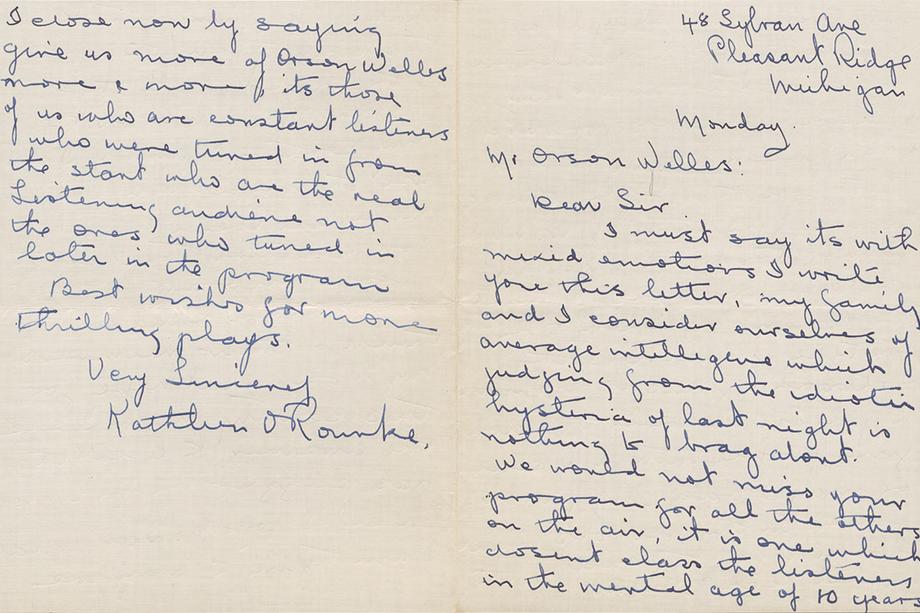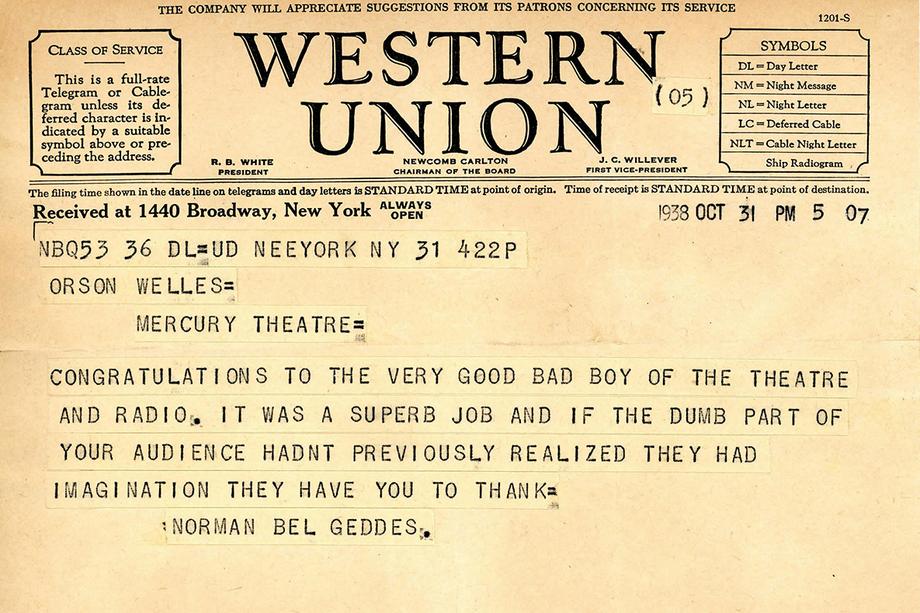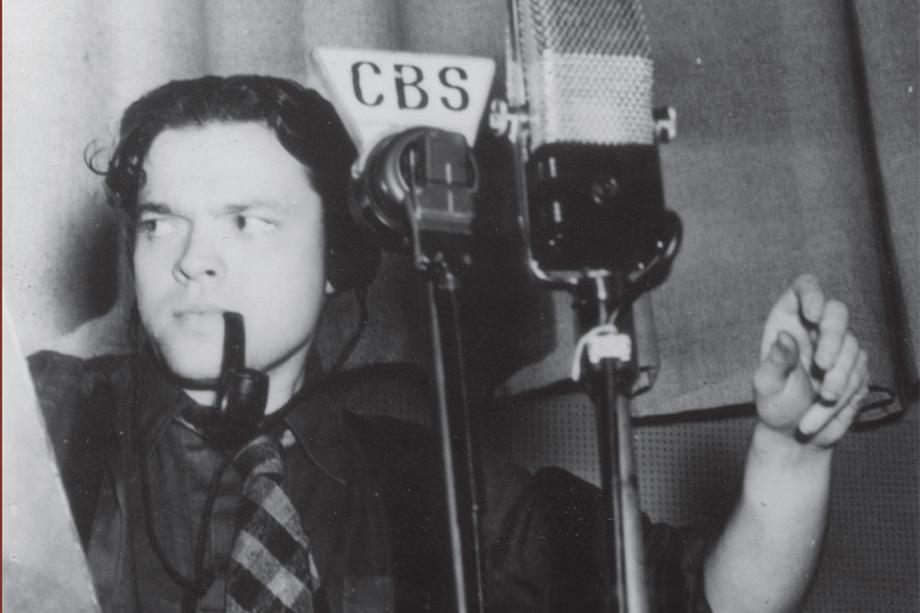Revisit The War of the Worlds
April 22, 2025
The University of Michigan Library has digitized and transcribed over 1,300 fan letters sent in response to the 1938 broadcast of Orson Welles's "The War of the Worlds." The entire collection of letters, part of the university's Screen Arts Mavericks & Makers Collection, is now available to students, researchers, and fans around the globe.
"These letters capture a unique moment in history as experienced by people from throughout the United States and from many walks of life, and now anyone can read them, study them, teach with them, and use them to support research we can only begin to imagine," said Philip Hallman, curator of the collection and one of the leads on the War of the Worlds project.
Teamwork
A successful Zooniverse campaign — launched not long after the COVID pandemic kept many people at home — drew 1,291 volunteers who transcribed and tagged almost all of the letters overnight. The enthusiasm took the U-M team by surprise.
"I thought it would take a couple of weeks to complete and was planning with my colleague to take turns answering questions and monitoring responses that came through the site," said Vince Longo, who began working on the project as a U-M graduate student, and is now an assistant professor in the School of Communication at Western Michigan University.
"But when we checked Zooniverse the next day, everything was transcribed within 24 hours, and we even got complaints that there weren't enough letters, or enough categories to choose from. It just shows this is one of those energizing stories in the world."
The massive effort — spearheaded by Longo and Hallman, aided by a library team that included Justin Schell, who led the crowdsourcing effort, and Chris Powell, whose technical expertise was essential — has yielded a resource with vast potential for discovery.

"Fake news"
In fact, back when it was only available to those able to visit the Special Collections Research Center, the letters fed an extraordinary honors thesis by then undergraduate A. Brad Schwartz that contrasted the widely-held notion of widespread panic with the experiences of people who'd actually heard the broadcast.
"I assumed, as I think everybody would knowing the story of how this broadcast supposedly caused a panic, that you would go through the letters and find stories of people fleeing their homes, grabbing their shotgun, collecting their money and belongings…and that is in there, but it is a much, much smaller part of the story than anyone realized."
His 2012 honors thesis led to a story credit on PBS's "The American Experience: War of the Worlds," and in 2015, one month before Donald Trump announced his candidacy, the publication of his book "Broadcast Hysteria: Orson Welles's War of the Worlds and the Art of Fake News."
Schwartz sees the growing resonance of his research findings. "The reason some portion of the audience believed this was because it played into their preexisting fears and biases. That is how misinformation and fake news work. But media literacy is teachable. You can't prevent people from falling for everything, but you can give them the skills to protect themselves, and that is one way on an individual level we can get our up and coming generations thinking more critically."
Schwartz gets some credit for the creation of the new online collection, according to Hallman. "The episode of 'American Experience' and the book led to requests for access to the letters," he said. Some of those requests came from teachers interested in incorporating the letters into their curricula, and the team will be adding lesson plans and ideas to the available materials.
What's next
In the meantime the collection, which is searchable and browseable, now offers everyone the chance to explore and discover.

"Welles was an innovator who pushed the boundaries of every media he worked in, both technically and in the stories he wanted to tell," he said, "so I think people will continue to find relevance in both the work itself, and in how people responded to it, for the foreseeable future." That will make the library's Welles archive — the largest in the world — an ever more valuable resource for research and inspiration.
Already he's aware of at least one intriguing project using the War of the Worlds Fan Mail Collection, one that relies on other publicly-available archival information. He wouldn't say any more than that. "They're just getting started. But it's really interesting."
Stay tuned.
by Jamie Sherman and Lynne Raughley

Orson Welles broadcasting "The War of the Worlds," 1938.